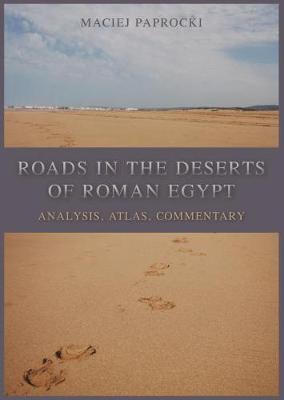Roads in the Deserts of Roman Egypt

Roads in the Deserts of Roman Egypt
Roads in the Deserts of Roman Egypt examines evidence for desert roads in Roman Egypt and assesses Roman influence on the road density in two select desert areas: the central and southern section of the Eastern Desert and the central Marmarican Plateau and discusses geographical and social factors influencing road use in the period, demonstrating that Roman overseers of these lands adapted remarkably well to local desert conditions, improving roads and developing the trail network. Crucially, the author reconceptualises desert trails as linear corridor structures that follow expedient routes in the desert landscape, passing through at least two functional nodes attracting human traffic, be those water sources, farmlands, mines/quarries, trade hubs, military installations or actual settlements. The `route of least resistance' across the desert varied from period to period according to the available road infrastructure and beasts of burden employed. Roman administration in Egypt not only increased the density of local desert `node' networks, but also facilitated internodal connections with camel caravans and transformed the Sahara by establishing new, or embellishing existing, nodes, effectively funnelling desert traffic into discernible corridors.Significantly, not all desert areas of Egypt are equally suited for anthropogenic development, but almost all have been optimised in one way or another, with road installations built for added comfort and safety of travellers. Accordingly, the study of how Romans successfully adapted to desert travel is of wider significance to the study of deserts
PRP: 314.39 Lei
Acesta este Pretul Recomandat de Producator. Pretul de vanzare al produsului este afisat mai jos.
282.95Lei
282.95Lei
314.39 LeiIndisponibil
Descrierea produsului
Roads in the Deserts of Roman Egypt examines evidence for desert roads in Roman Egypt and assesses Roman influence on the road density in two select desert areas: the central and southern section of the Eastern Desert and the central Marmarican Plateau and discusses geographical and social factors influencing road use in the period, demonstrating that Roman overseers of these lands adapted remarkably well to local desert conditions, improving roads and developing the trail network. Crucially, the author reconceptualises desert trails as linear corridor structures that follow expedient routes in the desert landscape, passing through at least two functional nodes attracting human traffic, be those water sources, farmlands, mines/quarries, trade hubs, military installations or actual settlements. The `route of least resistance' across the desert varied from period to period according to the available road infrastructure and beasts of burden employed. Roman administration in Egypt not only increased the density of local desert `node' networks, but also facilitated internodal connections with camel caravans and transformed the Sahara by establishing new, or embellishing existing, nodes, effectively funnelling desert traffic into discernible corridors.Significantly, not all desert areas of Egypt are equally suited for anthropogenic development, but almost all have been optimised in one way or another, with road installations built for added comfort and safety of travellers. Accordingly, the study of how Romans successfully adapted to desert travel is of wider significance to the study of deserts
Detaliile produsului








